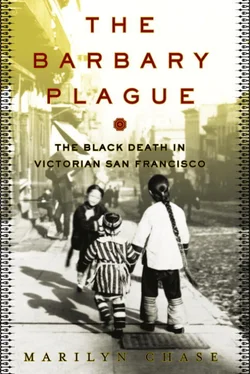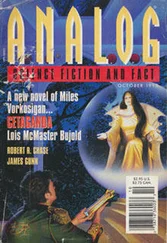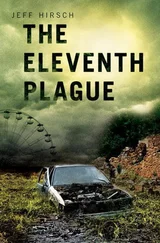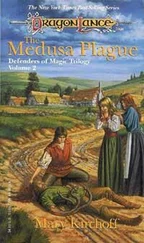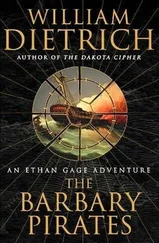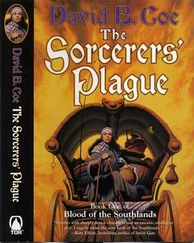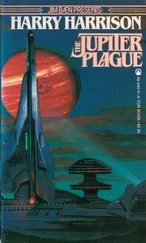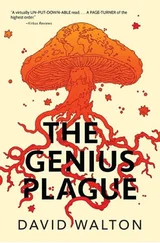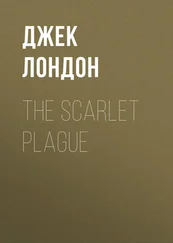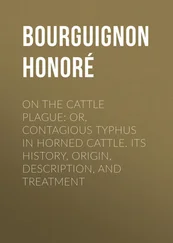With bubonic plague now ravaging China, Wyman rightly knew that the Pacific portal of the United States was vulnerable, so he enlisted Joseph Kinyoun to combat it. He told Kinyoun to pack up his family—which now included three children and a pregnant Lizzie—and go west.
Kinyoun was shocked by this abrupt transfer. After running the National Hygienic Laboratory, being sent back to police a port city against disease must have been a humiliating demotion. But Wyman had homed in on Kinyoun’s replacement at the Hygienic Lab, so Kinyoun was California bound. Although Kinyoun was a brilliant bacteriologist, he was decidedly the wrong man for the job of quarantine officer on the Golden Gate. The port, a melting pot simmering with racial tensions, needed a doctor with a diplomat’s touch. Instead, the city got an intellectually acute but autocratic scientist with a bruised ego who expected a level of deference the city wasn’t prepared to give.
On the eve of Kinyoun’s reluctant departure from Washington, D.C., his fellow physicians feted him with a farewell banquet at Rauscher’s Restaurant. Their toasts were printed up in a cream-colored program bound with blue silk cord. Rumpled and stained from the night’s festivities, a copy would rest with his papers until he died.
“Ah, happy, proud America! Thrice happy to possess men of Kinyoun’s stamp, with all their faculties calmly and resolutely bent upon the fulfillment of a noble duty to mankind,” intoned the toastmaster that night. “I wish you God-speed in your journey across the continent to the Golden Gate of the Pacific Ocean, where new fields of activity and new friends await you….” 7
After a week on the train with a pregnant wife and three small children, Kinyoun reached his foggy exile. Temporarily ensconced in the plush and gilt Palace Hotel, with its liveried doormen, he found rates that no health officer could afford. It was “the spider’s trap for the eastern fly, and everyone pays tribute to these money sharks, on setting foot in San Francisco,” he wrote to relatives and colleagues back East. 8
He checked out. Kinyoun bundled his family into a carriage that clopped down Market Street to the Ferry Building, where they boarded the steamer George Sternberg . Five miles and forty minutes later, the boat swung into a sheltered inlet on the northern shore of Angel Island.
Facing north, away from San Francisco toward the tiny Marin County hamlet of Tiburon, his new headquarters was an eyesore in paradise. The biggest island in the bay, Angel Island was an ancient Miwok Indian camp, now occupied by U.S. quarantine and military officers. Its 740 acres were canopied with oak, madrone, bay laurel, and eucalyptus. Washed by the blue-green waters of Raccoon Strait, Hospital Cove might have made a beautiful spot for a resort hotel, Kinyoun mused. Then he beheld the primitive quarantine station and sparsely furnished cottage. His wife, Lizzie, was appalled. Kinyoun’s heart sank.
The ramshackle wharf and quarantine station’s dirt roads melted into mud rivulets in the rainy season. And if the quarantine officer’s quarters were primitive, facilities for immigrants were even worse. There was no shed to shelter immigrants after their disinfecting bath. So the new arrivals had to stand, soaked and shivering, in the bay wind. It was a cold hygienic threshold to what would become in later years the Ellis Island of the Pacific Coast.
His new island home had few neighbors, no school, and little amusement for the children: Mary Alice, Conrad, Perry, and their new redheaded baby, John Nathan. There was a pier for fishing, but Kinyoun found Pacific fish to be insipid fare. Lizzie had a bad foot that kept her housebound. Too frail for more than one evening out in fourteen months, she was often in a raw temper. 9They were isolated and made few friends. At night, it seemed that they were the ones in quarantine, bound by the sigh of the waves, the tolling of fog bells, and the pulse of the lighthouse.
The bright spot in their island exile was photography: Lizzie spent evenings in her darkroom, conjuring blurry portraits of her children out of the vinegary chemical bath. This hobby kept a kind of peace; Joseph had his lab, and Lizzie had hers.
Kinyoun chafed in the epaulets of his federal public health officer’s uniform, which made him look ridiculous, he said, like a “major-domo” or a “government mule.” 10He’d been a young star in the Marine Hospital Service, nailing the cholera diagnosis while still in his twenties. Why had Dr. Wyman rewarded him with a transfer to this rude place, remote from the nerve center of public health? Kinyoun bitterly joked that Dr. Wyman had sent him out West to bury him. Writing to one of his mentors, Kinyoun swore that if that were the case, he would prove to be “a rather lively corpse.” 11
For certain, his scientific pedigree wasn’t worth a wooden nickel in this rowdy town, where bankers, bosses, and broadsheets ruled. Kinyoun resented the grip of merchants on the life of the city and its public health. “You know,” he wrote the folks back East, “San Francisco is frequently called ‘Jew Town.’ Well named.” 12He imagined that the city’s Jewish businessmen were trying to get rid of him. About that, Kinyoun was wrong; all the city’s businessmen wanted to get rid of him. His plague work was bad for business. The more the city reviled him, the more Kinyoun relished his image as the hero of a lonely public health crusade.
“I fortunately for one time in my life assumed the role of Dav[ey] Crockett… knowing that I was right,” he confided to a friend. 13Guarding the nation’s health, he felt that he was under siege, much like his coonskin-capped hero in the Alamo.
One night, his wife, Lizzie, dreamed that the surgeon general came unannounced to Angel Island and requested a candle from her so he could inspect the quarantine station in the dark. Wait for my husband, she protested. What does it mean, Joe? she asked Kinyoun later. The surgeon general was in the dark, and he needed Kinyoun to light his way—it seemed clear enough. Kinyoun longed to be like his namesake, the biblical Joseph, honored by Pharaoh for his interpretation of the nightmare about to unfold on this alien coast. 14
THE SPECTER OF PLAGUEhad risen up before here. In June 1899, the Japanese steamship Nippon Maru had docked in San Francisco after two deaths at sea and two stowaways who jumped overboard with alleged plague ravaging their bodies. It had been impossible to prove the diagnosis. Indeed, Kinyoun’s own lab analysis disputed it.
But now the memory of another ship haunted Kinyoun—the steamer Australia , which arrived from plague-stricken Honolulu in January 1900. It moored at the dock where the sewers from Chinatown emptied. The Chinese soon observed great numbers of rats dying on their roofs and in their courtyards. It seemed probable the rats had gained entrance to Chinese homes through the sewer pipes. 15
Quarantine officers were always under pressure to grant ships a speedy permission to dock. Still, Kinyoun had always tried to be vigilant. In January 1900, he ordered ships coming from the infected zones of Hong Kong, Honolulu, Sydney, and Kobe to fly the yellow warning flag, the sign of a ship that has come from a plague port.
Kinyoun’s letters to Dr. Wyman in Washington warning of the plague threat had grown increasingly shrill. He feared that inbound military ships from Manila might be capable of importing the plague into San Francisco. He thought the authorities overseas were concealing the risk. 16Could he have missed something?
With Kellogg hovering at his side, Kinyoun peered through the microscope at the bacteria from Wong’s tissues and blood. He felt a throb of recognition. Yes, this was it—the rose-tinted rods, dark at the ends. To be sure of his diagnosis, Kinyoun had to isolate it in pure culture and inoculate test animals to replicate the illness of Wong Chut King. After filling a syringe with bacteria from the dead man, he injected a rat, two guinea pigs, and a monkey. If the rod-shaped germs were plague bacteria, the animals would sicken. If they died with the same symptoms, he would biopsy their lymph nodes. If he found plague germs in their lymph fluid, he would have his proof. He placed the test animals back in their cages, and then inside large earthenware vessels for safety, and waited.
Читать дальше
